
The 17th hole at Boiling Springs Golf Club in Woodward, Okla., showcases the club’s work to “naturalize” its bunker tops and faces with drought-hardy native grasses such as little bluestem, sideoats grama and blue grama. The overall effort to restore the site’s native sand dunes aligns with industry trends of reducing maintained turf and relaxing bunker upkeep. Photo by Michayla Wiegert
Many who study the evolution of American golf recognize the development of Sand Hills Golf Club in western Nebraska as a stylistic turning point. Before the private club opened in 1995, the U.S. golf course ideal was largely lush, green and parkland in nature. Since, that ideal has grown increasingly brown, rough-hewn and sand-based. Superintendents, course owners and club boards were naturally influenced by this shift in aesthetics.
Yet for Jeff Wagner, the GCSAA Class A superintendent at Boiling Springs Golf Club in Woodward, Okla., a more meaningful milestone is the 2014 U.S. Open at Pinehurst No. 2.
In 2005, when Michael Campbell won the Open there, the Donald Ross design had been presented in the parkland milieu, flanked by thick rough and pine straw. When Martin Kaymer prevailed at No. 2 nine years later, a renovation from Bill Coore and Ben Crenshaw (designers of Sand Hills) had revealed a very different golf course.
“The Open at Pinehurst really put this ‘naturalization’ movement in overdrive, and we are absolutely a product of that,” says Wagner, noting that Nebraska’s Sand Hills was a new build. He considers the renovation at No. 2 to be far more instructive to superintendents trying to move their existing facilities toward this more natural, sand-based zeitgeist.
“Agronomically, the elephant in the room here is that we’re a $40 muni in the middle of nowhere,” says Wagner, an eight-year member of GCSAA. “We’ve got transition zone bentgrass and, due to our sandy soils, some of the state’s highest populations of nematodes. And effluent irrigation. It would be a world-class challenge at a high-end country club, and we’re asked to do it on 75 grand.
“Still, to go from what Pinehurst No. 2 was, to what we saw in 2014? That was a complete blowup. But that’s how they found the original lines of play at No. 2. They followed the old, single-row irrigation and extrapolated from there. The further away they got, the more the corridor was allowed to go native.
“That was our inspiration. Because when it comes to terrain, we have what everyone wants now — a great, sandy course routed through forested sand dunes. Like Royal Melbourne. The vertical relief here is better than it is at Prairie Dunes, to be honest. We’re not competing with Prairie Dunes or Sand Valley or Streamsong, but we are operating on the same ideas. The difference is, we’re adapting an existing golf course toward that idea — like they did at Pinehurst.”
So, tournament golf — played by tour professionals, on television — really does affect the way golf is played at $40 municipal courses. Just not always in ways we might expect.
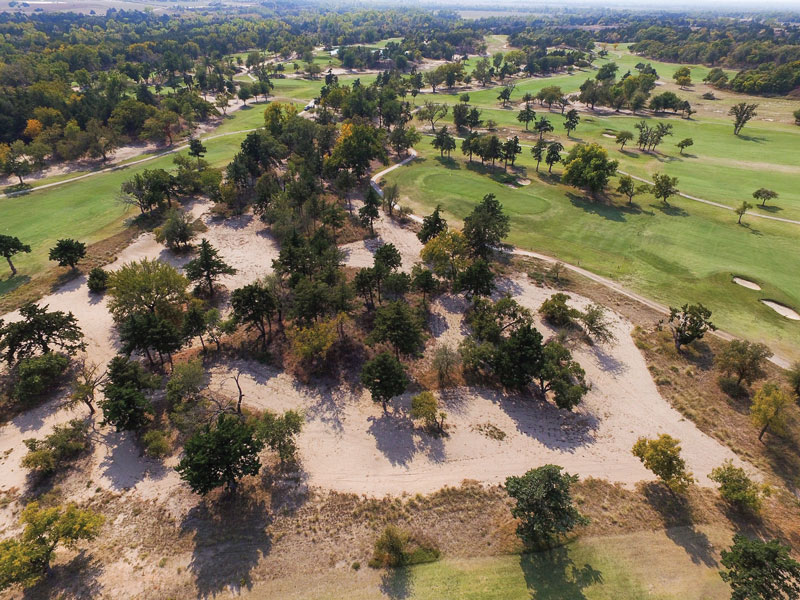
A recent aerial view of Boiling Springs Golf Club, where superintendent Jeff Wagner and his team have been on a quest to remove eastern red cedar trees and reveal the property’s sand dunes. Photo courtesy of Jeff Wagner
The 2021 PGA Championship contested in May on the Ocean Course at South Carolina’s Kiawah Island Golf Resort turned heads when local tournament rules allowed the grounding of clubs in any and all sandy areas — expansive waste areas, of course, but also formalized greenside bunkers.
Industry types, especially superintendents, might wonder how similar local rules might be accepted at their clubs, and how such rules might affect maintenance budgets, operations and staffing. But Wagner believes these questions miss the big picture. They skirt the many, existential inflection points golf must reckon with today, even as the sport enjoys a pandemic-fueled participation boom.
“Post-COVID, the laws of normal have changed,” Wagner says, adding that a new type of golfer has arrived at Boiling Springs and at daily fees and private clubs all over the country. “Nobody raked bunkers pre-COVID, and, sure as hell, nobody does now. We went a year without rakes in the bunkers at all. Golfers today aren’t going to rake bunkers whether they ground their clubs or not.
“Our game is at a unique juncture here. If we’re not adapting and evolving as an industry, we’re dying. As a $40 muni, with all these different things happening, we feel like we’re at the heart of all this change.”
When trees take over
This evolving vision for Boiling Springs began prior to Wagner’s arrival in 2015. The course was designed by Don Sechrest and was well received when it opened in 1979.
But Woodward is located in far western Oklahoma, off the beaten path even by Great Plains standards. Back in the late ’70s and ’80s, comparatively few Americans were stalking the landscape, looking for remote, sandy sites to accommodate inland links. Prairie Dunes, three hours north of Woodward, in Hutchinson, Kan., has long been acknowledged and feted as an inland links prototype. When Sechrest designed Boiling Springs, however, Perry Maxwell was better known for his work at parkland designs like Southern Hills.
Editor’s note: Last May, after 15 years and 200-plus course stops, Oklahoma superintendent David Jones checked one final unplayed Sooner State venue off his list, and that course was Boiling Springs in Woodward. Read all about the feat in Superintendent plays every Oklahoma golf course.
The site encountered by Sechrest in Woodward had always featured eastern red cedars, but they proliferated during the ’80s to a remarkable degree. By the late ’90s, when facilities such as Sand Hills, Dismal River, Sutton Bay and Wild Horse started changing American ideas about ideal golf environments, Boiling Springs and its dunescape — part of a sand belt that hugs the Canadian River all the way to Oklahoma City — were completely obscured by rampant red cedar growth.
What’s more, the course had developed a reputation as a ball-eater.
“People would drive hours to play here, then lose a ball on every hole,” Wagner says. “You get a dominant female (red cedar), and it produces 150 juvenile trees, gobbling up hundreds of square feet. All of a sudden, it has become a jungle environment.”
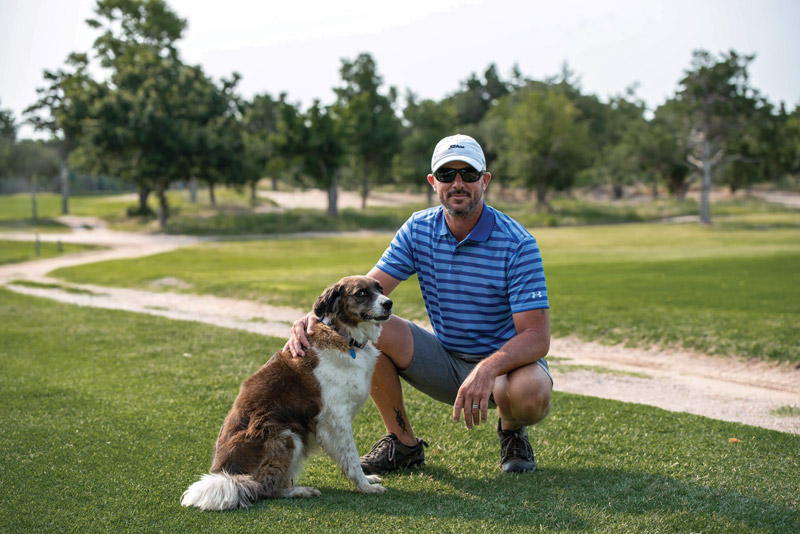
Boiling Springs superintendent Jeff Wagner with his canine companion, Heidi. Photo by Michayla Wiegert
Bottom line: The longer Boiling Springs operated, the more obscured Sechrest’s design became — and the harder it became to play. Wagner and the locals refer to these as the “dark days,” and they continued until the Great Recession of 2008. That’s when John Dunn got involved.
A Woodward native and attorney, Dunn operates a boutique golf management company out of Oklahoma City. He and architect Jeff Blume eventually collaborated on a greens renovation at Boiling Springs in 2013, but the re-imagination of the facility required larger ambitions, not to mention someone on-site, every day, beating back eastern red cedars and softening the layout’s transitions from fairway to natural scrub.
Enter Wagner, who grew up 90 miles from Woodward in Enid. He’d studied agronomy at Oklahoma State, but upon graduation in 2007, he went north and west. Wagner spent 11 years cultivating bentgrass at Colorado private courses like Roaring Fork Club in Aspen and The Glacier Club in Durango. “Boiling Springs was the only job I ever applied for outside of Colorado,” he recalls.
Managing trees, moisture and expectations
Wagner arrived back home in 2015, the memory of Martin Kaymer’s Open victory at Pinehurst No. 2 still fresh in his mind.
“It took me a year to get this place on a solid footing, to make the greens respectable, to make this place worth the trip,” he says. “If we don’t get that right, people don’t come back. We dealt with that for two years.”
Wagner’s war on the eastern red cedars took five years.
“They were devouring the golf course. It was a big project, and we’ll never be finished with it, to be honest. They can grow to 2 feet in diameter and 60 feet tall. It took three years to pull out 100,000 cedar trees, and that’s probably a low-ball figure. That number seems absurd, but we’re talking acres and acres of underbrush as well. With dominant females and 35 years of unmitigated spread, they had choked out everything else of quality.”
Boiling Springs will never exist as a treeless expanse, but beating back this forest greatly expanded the play corridors. At the same time, Wagner has taken maintainable turf down 50%, to just 45 acres.
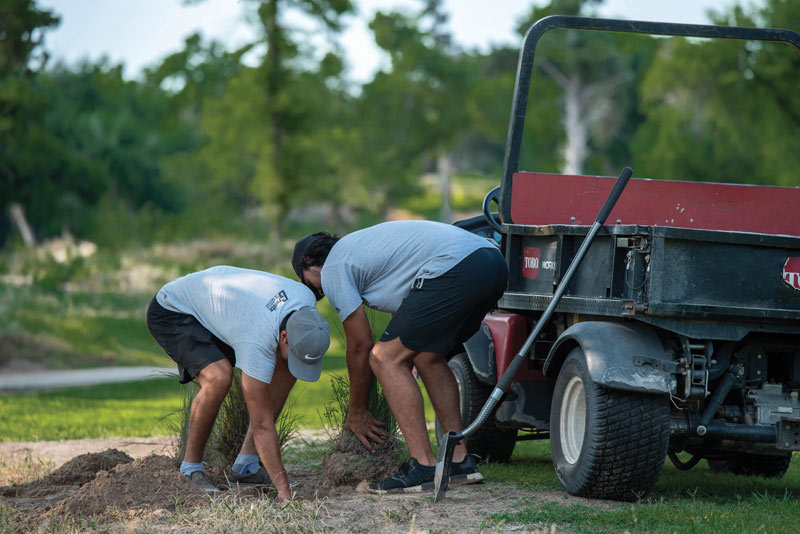
Transplanting the native grass little bluestem on hole No. 17. Photo by Michayla Wiegert
As part of this evolution, the transitions from turf to native areas have also evolved. The biggest step — the most expensive and lengthy step — was the swapping out of all the 360-degree sprinkler heads for 180s. Without that sort of directional control, the native areas were simply too moist, which only exacerbated the invasion of cedars, sand burrs and various weeds.
“We were just pouring gasoline on the fire,” Wagner says. “Looking back, it feels a bit self-inflicted. But once you take the water out of that scenario, the effect is immediate.
“As we get farther from the central row of sprinklers, our definition reduces. We have viewed that fact as an opportunity. Prior to my arrival, we just had a wall of jungle bumping up against play corridors — and we had cedars sucking the water away from everything else, every night.
“The naturalization process is still evolving, and getting out of your own way is hard. There’s no way to speed it up. We’re exposing places that haven’t seen the light of day for 35 years. And we’ve unleashed wicked competition between weeds and sand burrs and native grasses all trying to proliferate. As a turf manager, you’re programmed to want results and achieve them more or less immediately. That isn’t what’s happening there. There’s a process. It’s ongoing.”
A movement toward ‘natural,’ away from ‘traditional’
The pandemic hasn’t changed golf, but it has changed golfer expectations — expectations of what a bunker is, of what distinguishes a bunker from a waste area, of what constitutes proper golf attire, of what a course worth driving four hours to play should look like. After playing golf for a year without removing pins or raking bunkers, one naturally begins to question whether removing pins or raking bunkers is necessary.
Wagner isn’t making any of the decisions about how exactly to meet these shifting expectations, nor should any superintendent, anywhere. But supers, in Wagner’s view, can and should adjust to what golfers appear to prefer. At Boiling Springs, that means full speed ahead with the naturalization effort.
“So, we can’t really achieve that defined transition from green to sandscape. We want to get to a one-cut maintenance pattern, one where our irrigated and maintained rough areas are essentially going away. That’s the goal. And that’s tied up with our aesthetic goals, because every layer we peel back, we expose the star of the show: 20- to 30-foot sand dunes.”
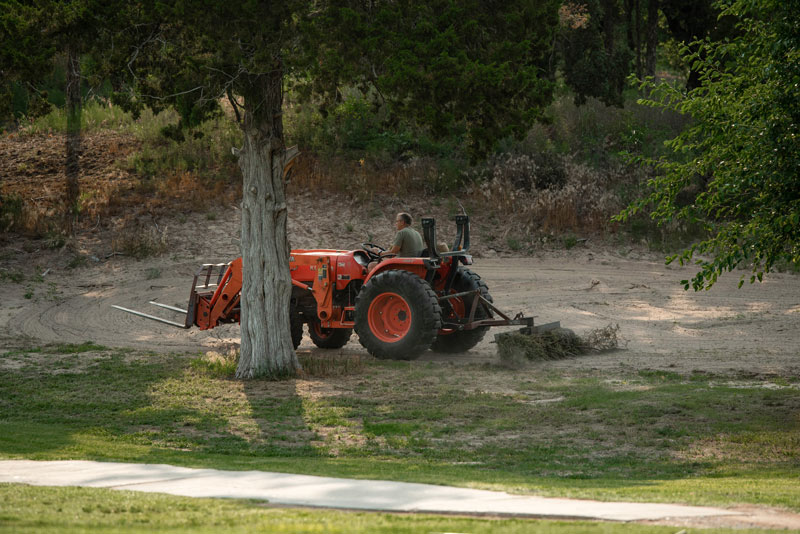
The golf course maintenance team at Boiling Springs uses a tractor rake (shown here on hole 12) to maintain the course’s native “sandscapes.” “Where wind erosion is of no concern, we maintain and highlight our native sand as a playable area, which we believe is one of our most unique and special features on-site,” says superintendent Jeff Wagner. Photo by Michayla Wiegert
Wagner calls the “naturalization movement” he’s engaged in at Boiling Springs “the heart of the game.” And we didn’t even discuss golf’s increasing treatment of water as a commodity. It’s golf’s good luck that such conservation is also built right into the sand and scrub movement launched by Sand Hills in 1995.
Accordingly, if we’re seeking a useful lens through which we can examine all of these shifts in golfer expectations, sand might well be that lens. After all, it sits at the heart of the naturalization movement, the rise of sand and scrub, club-grounding, informal bunker management, waste area management, and water conservation.
Editor’s note: An Ohio superintendent shares his process for eliminating bunkers — and the resources they require — while maintaining golf course aesthetics and architectural integrity in The art of golf course bunker removal.
Golfer expectations might affect the way Wagner deals with issues, but only to a degree.
“I mean, the overwhelming majority of my players don’t even know you can’t ground your club in a hazard,” Wagner says. “The types of players we’re attracting to the game post-COVID definitely don’t. Supers joke online and post pictures of players stepping over rakes into bunkers — then stepping back over them on the way out. In that way, veteran golfers and new golfers are very much alike.
“But in that light, it’s just crazy to spend time and money maintaining those bunkers to that level. They devour resources. That’s a big argument on Twitter right now — what is the expectation for bunkers?”
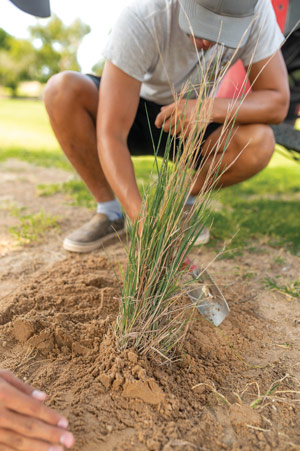
Do golfers really care whether the bunkers they encounter are pristine? Does the introduction of all of these waste/natural areas affect golfer expectations when they arrive greenside and play from formalized sand? Wagner answers no and yes. More broadly, he sees the post-COVID period as a potential pivot point, an opportunity to re-examine all sorts of golfer expectations that have nothing to do with bunkers.
“All these things we used to take as religious convictions are now being questioned,” Wagner says. “Like music on the golf course and the appearance of all these hoodies. Now that has ruffled some feathers. That’s new, but the sentiment isn’t. I saw a guy cry once because he was so offended that someone wore jeans in his clubhouse.
“I really hope that, post-COVID, we’re acknowledging that adhering to snobby traditionalism comes with a cost, especially in public golf. I’m 40 years old, a tail-end millennial, and I think these points of concern transcend the caliber of your club. On the spectrum of industries that stand to benefit from the redefining of things, golf is near the top of the list. If we really want to grow the game, this sort of adaptation is part of it.”
Hal Phillips is the managing director of Mandarin Media, an international digital/content marketing firm. He is the former editor of Golf Course News and a frequent contributor to GCM.